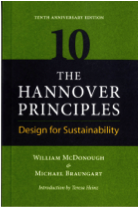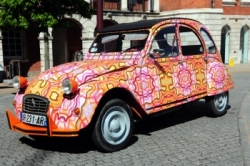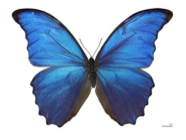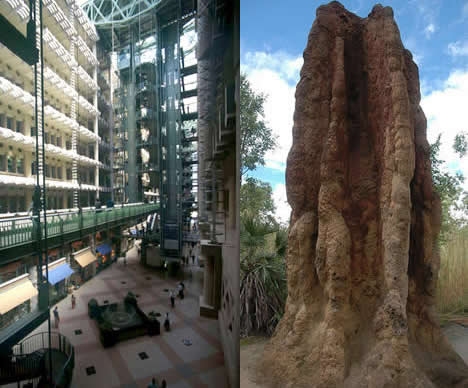1.3 Principles of Sustainable Design
The next question for us to explore is how the meanings of sustainability extend into technical spheres, specifically engineering, design, and technology development.
The term design is normally referred to the "way of doing things or making things" in various areas of human activity. Design is always driven by a specific objective, such as making the product or system most efficient, or most profitable, or most aesthetically impressive, etc. Such objectives can be drastically polar and to reach them, designing phase may require change of thinking and high level of creativity. So, what is sustainable design?
This concept was largely advocated by William McDonough, an American designer, architect, author, and thought leader, who espouses a message that we can design materials, systems, companies, products, buildings, and communities that can continuously improve over time.
"If design is the first signal of human intention, our intention today can be to love all ten billion people who will live on our planet by 2050. We can do this. If we imagine and embrace our cities as part of the same organism as the countryside, the rivers and the oceans, then we can celebrate ourselves, all species and the natural systems we support and that support us. This is our design assignment. If we are principled and have positive goals, we can rise to this occasion. It will take us all; it will take forever—that is the point." (McDonough, 1992)
The concept of sustainable design is supplied with some lively illustrations in McDonough's TED Talk
Watch this video: William McDonough's TED Talk (19:46)

McDonough crafted sustainable design principles for Expo 2000, The World’s Fair, which became known as "The Hannover Principles: Design for Sustainability." This document has wide philosophical and ethical dimensions and should be seen as a living document committed to the transformation and growth in the understanding of our interdependence with nature and future generations.
THE HANNOVER PRINCIPLES [McDonough, 1992]
- "Insist on rights of humanity and nature to coexist in a healthy, supportive, diverse and sustainable condition.
- Recognize interdependence. The elements of human design interact with and depend upon the natural world, with broad and diverse implications at every scale. Expand design considerations to recognizing even distant effects.
- Respect relationships between spirit and matter. Consider all aspects of human settlement including community, dwelling, industry and trade in terms of existing and evolving connections between spiritual and material consciousness.
- Accept responsibility for the consequences of design decisions upon human well-being, the viability of natural systems and their right to coexist.
- Create safe objects of long-term value. Do not burden future generations with requirements for maintenance or vigilant administration of potential danger due to the careless creation of products, processes, or standards.
- Eliminate the concept of waste. Evaluate and optimize the full lifecycle of products and processes, to approach the state of natural systems, in which there is no waste.
- Rely on natural energy flows. Human designs should, like the living world, derive their creative forces from perpetual solar income. Incorporate this energy efficiently and safely for responsible use.
- Understand the limitations of design. No human creation lasts forever and design does not solve all problems. Those who create and plan should practice humility in the face of nature. Treat nature as a model and mentor, not as an inconvenience to be evaded or controlled.
- Seek constant improvement by the sharing of knowledge. Encourage direct and open communication between colleagues, patrons, manufacturers and users to link long term sustainable considerations with ethical responsibility, and reestablish the integral relationship between natural processes and human activity."
It is a philosophy that can be applied in the fields of architecture, landscape architecture, urban design, urban planning, engineering, graphic design, industrial design, interior design, fashion design, human-computer interaction, and many other areas depending on modern technologies.
In the consideration of the above principles, a strong emphasis is put on #6 [waste elimination], since it perhaps has the most profound impact on environment and human health as well as contains possible solutions for smart use and reuse of limited natural resources. A good waste prevention strategy would require that everything brought into a facility or process be recycled for reuse or recycled back into the environment through biodegradation. This would mean a greater reliance on natural materials or products that are compatible with the environment. Any resource-related development is going to have two basic sources of solid waste — materials purchased and used by the facility and those brought into the facility by visitors. The following are some waste prevention strategies that apply to both, although different approaches will be needed for implementation:
- Low-impact materials: Choose non-toxic, sustainably produced or recycled materials which require little energy to process.
- Energy efficiency: Use manufacturing processes and produce products which require less energy.
- Emotionally Durable Design: Reduce consumption and waste of resources by increasing the durability of relationships between people and products, through design.
- Design for reuse and recycling: "Products, processes, and systems should be designed for performance in a commercial 'afterlife'."
- Biomimicry: "redesigning industrial systems on biological lines ... enabling the constant reuse of materials in continuous closed cycles..."
- Service substitution: Shift the mode of consumption from personal ownership of products to provision of services which provide similar functions, e.g., from a private automobile to a carsharing service. Such a system promotes minimal resource use per unit of consumption (e.g., per trip driven).
- Renewability: Materials should come from nearby (local or bioregional), sustainably managed renewable sources that can be composted when their usefulness has been exhausted.
Here are some of the examples how design approaches attempt to promote the sustainability principles:
Emotionally Durable Design
 Credit: Liz Nehdi / The 2CV Chronicles Project
Credit: Liz Nehdi / The 2CV Chronicles Project Credit: Making It Magazine
Credit: Making It MagazineThe concept and philosophy of Emotionally Durable Design was pioneered by Jonathan Chapman, Professor of the University of Brighton (UK). According to this philosophy, increasing the resilience of relationships established between consumers and products reduces the consumption and waste of natural resources. Chapman states that "the process of consumption is, and has always been, motivated by complex emotional drivers, and is about far more than just the mindless purchasing (and discarding) of newer and shinier things". For example, these couple of images illustrate personalized design of products, when in addition to their normal function, the objects also help the owner to make a statement or express their style of life. To this end, 'emotional durability' can be achieved through consideration of the following five elements:
- Narrative: How users share a unique personal history with the product.
- Consciousness: How the product is perceived as autonomous and in possession of its own free will.
- Attachment: Can a user be made to feel a strong emotional connection to a product?
- Fiction: The product inspires interactions and connections beyond just the physical relationship.
- Surface: How the product ages and develops character through time and use.
As a strategic approach, "emotionally durable design provides a useful language to describe the contemporary relevance of designing responsible, well-made, tactile products which the user can get to know and assign value to in the long-term."
Biomimicry

Biomimicry is the imitation of the models, systems, and elements of nature in design, engineering, and science primarily for finding new solutions to scientific or technological challenges. The biomimicry has given rise to new technologies created from biologically inspired engineering at both the macro scale and nanoscale levels. In fact, humans have been looking at nature for answers to both complex and simple problems throughout world history. Nature has solved many of today's engineering problems such as hydrophobicity, wind resistance, self-assembly, and harnessing solar energy through the evolutionary mechanics of selective advantages. Here are several examples (out of many) showing using biological subjects as models in technology.
Because natural systems are a priori sustainable, designs observed in the nature can be viewed as prototypes of smart technologies for potential anthropogenic sustainability systems.
- A. The morpho butterfly (shown in the image above from Wikipedia) gains its color due to special structural orientation of scale in its wings. Incident light is reflected at specific wavelengths to create vibrant colors due to multilayer interference, diffraction, thin film interference, and scattering properties. Now, some companies (Qualcomm) use this principle in manufacturing colored displays at much lower power consumption (as compared to production of dyes).
 Credit: http://en.wikipedia.org
Credit: http://en.wikipedia.org - B. Researchers studied the termite's ability to maintain virtually constant temperature and humidity in their termite mounds in Africa despite outside temperatures that vary from 1.5 °C to 40 °C (35 °F to 104 °F). Researchers initially scanned a termite mound and created 3-D images of the mound structure, which revealed construction that can influence human building design. The Eastgate Centre, a mid-rise office complex in Harare, Zimbabwe (image on the left), stays cool without air conditioning and uses only 10% of the energy of a conventional building its size (Source: Biomimicry).
- C. Holistic planned grazing, using fencing and/or herders, seeks to restore grasslands by carefully planning movements of large herds of livestock to mimic the vast herds found in nature where grazing animals are kept concentrated by pack predators and must move on after eating, trampling, and manuring an area, returning only after it has fully recovered. Developed by Allan Savory, this method of biomimetic grazing holds tremendous potential in building soil, increasing biodiversity, reversing desertification, and mitigating global warming, similar to what occurred during the past 40 million years as the expansion of grass-grazer ecosystems built deep grassland soils, sequestering carbon and cooling the planet (Source: Biomimicry).
- Paper wasps' nests are made out of cellulose (or chewed up wood) and wasp saliva. The wasp uses saliva that has a lot of protein in it and that protein mixed with the cellulose creates a water insoluble but also waterproof covering. It is interesting that in rainy environments, wasps are found to use more protein in their saliva in order to make the nest more waterproof. And because protein is quite expensive from a wasp’s standpoint because they have to go get more insects to get more protein, they are only going to use it if they really need it. So, if this is in a dry environment or protected from overhead, they are not using as much protein. This idea can be borrowed to make non-toxic, waterproof paper, or other biodegradable materials (Source: Biomimicry Case Examples)
Supplemental reading on sustainable design:
Book: McDonough and Braungart, M., Cradle to Cradle. Remaking the Way We Make Things, North Point Press, NY 2002.
Engaging book on philosophy of sustainable design with numerous examples and stories. Authors explain how products can be designed in such a way that after their service life, they become not waste, but nourishment for something new..
Journal article: Chapman, J., Design for (Emotional) Durability, Design Issues, v.25, Issue 4, 29, 2009.
This paper elaborates on the concept of emotionally durable design and overviews avenues for change.
Web article: Cohen, S., Economic Growth and Environemntal Sustainability, Columbia Climate School, Jan 27, 2020,
This article discusses how sustaible design may help marry the economic growth with the environmental protection and lead to better quality of life in both developed and developing world.
